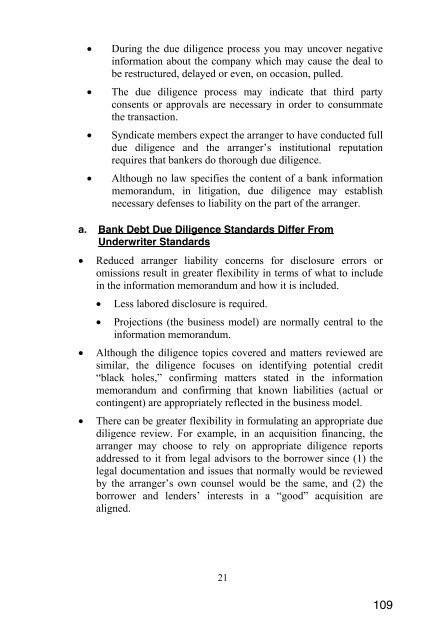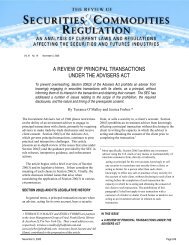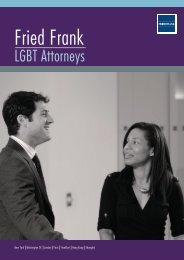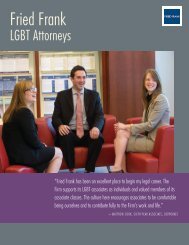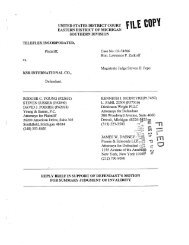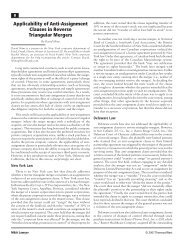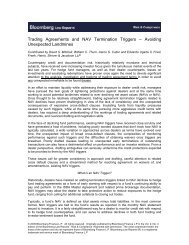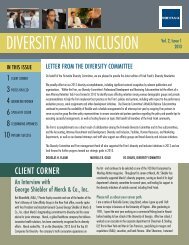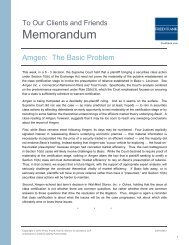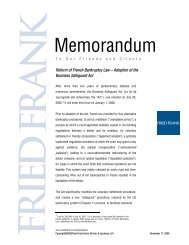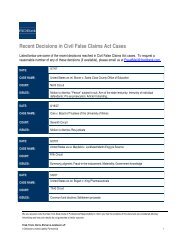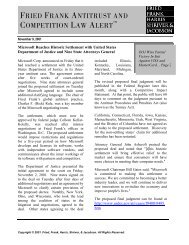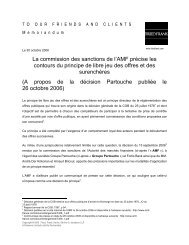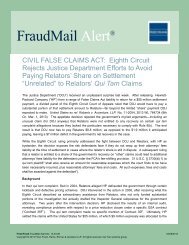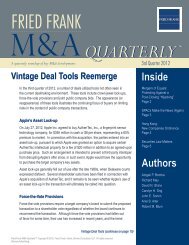The due diligence process from the underwriter's - Fried Frank
The due diligence process from the underwriter's - Fried Frank
The due diligence process from the underwriter's - Fried Frank
Create successful ePaper yourself
Turn your PDF publications into a flip-book with our unique Google optimized e-Paper software.
• During <strong>the</strong> <strong>due</strong> <strong>diligence</strong> <strong>process</strong> you may uncover negative<br />
information about <strong>the</strong> company which may cause <strong>the</strong> deal to<br />
be restructured, delayed or even, on occasion, pulled.<br />
• <strong>The</strong> <strong>due</strong> <strong>diligence</strong> <strong>process</strong> may indicate that third party<br />
consents or approvals are necessary in order to consummate<br />
<strong>the</strong> transaction.<br />
• Syndicate members expect <strong>the</strong> arranger to have conducted full<br />
<strong>due</strong> <strong>diligence</strong> and <strong>the</strong> arranger’s institutional reputation<br />
requires that bankers do thorough <strong>due</strong> <strong>diligence</strong>.<br />
• Although no law specifies <strong>the</strong> content of a bank information<br />
memorandum, in litigation, <strong>due</strong> <strong>diligence</strong> may establish<br />
necessary defenses to liability on <strong>the</strong> part of <strong>the</strong> arranger.<br />
a. Bank Debt Due Diligence Standards Differ From<br />
Underwriter Standards<br />
• Reduced arranger liability concerns for disclosure errors or<br />
omissions result in greater flexibility in terms of what to include<br />
in <strong>the</strong> information memorandum and how it is included.<br />
• Less labored disclosure is required.<br />
• Projections (<strong>the</strong> business model) are normally central to <strong>the</strong><br />
information memorandum.<br />
• Although <strong>the</strong> <strong>diligence</strong> topics covered and matters reviewed are<br />
similar, <strong>the</strong> <strong>diligence</strong> focuses on identifying potential credit<br />
“black holes,” confirming matters stated in <strong>the</strong> information<br />
memorandum and confirming that known liabilities (actual or<br />
contingent) are appropriately reflected in <strong>the</strong> business model.<br />
• <strong>The</strong>re can be greater flexibility in formulating an appropriate <strong>due</strong><br />
<strong>diligence</strong> review. For example, in an acquisition financing, <strong>the</strong><br />
arranger may choose to rely on appropriate <strong>diligence</strong> reports<br />
addressed to it <strong>from</strong> legal advisors to <strong>the</strong> borrower since (1) <strong>the</strong><br />
legal documentation and issues that normally would be reviewed<br />
by <strong>the</strong> arranger’s own counsel would be <strong>the</strong> same, and (2) <strong>the</strong><br />
borrower and lenders’ interests in a “good” acquisition are<br />
aligned.<br />
21<br />
109


